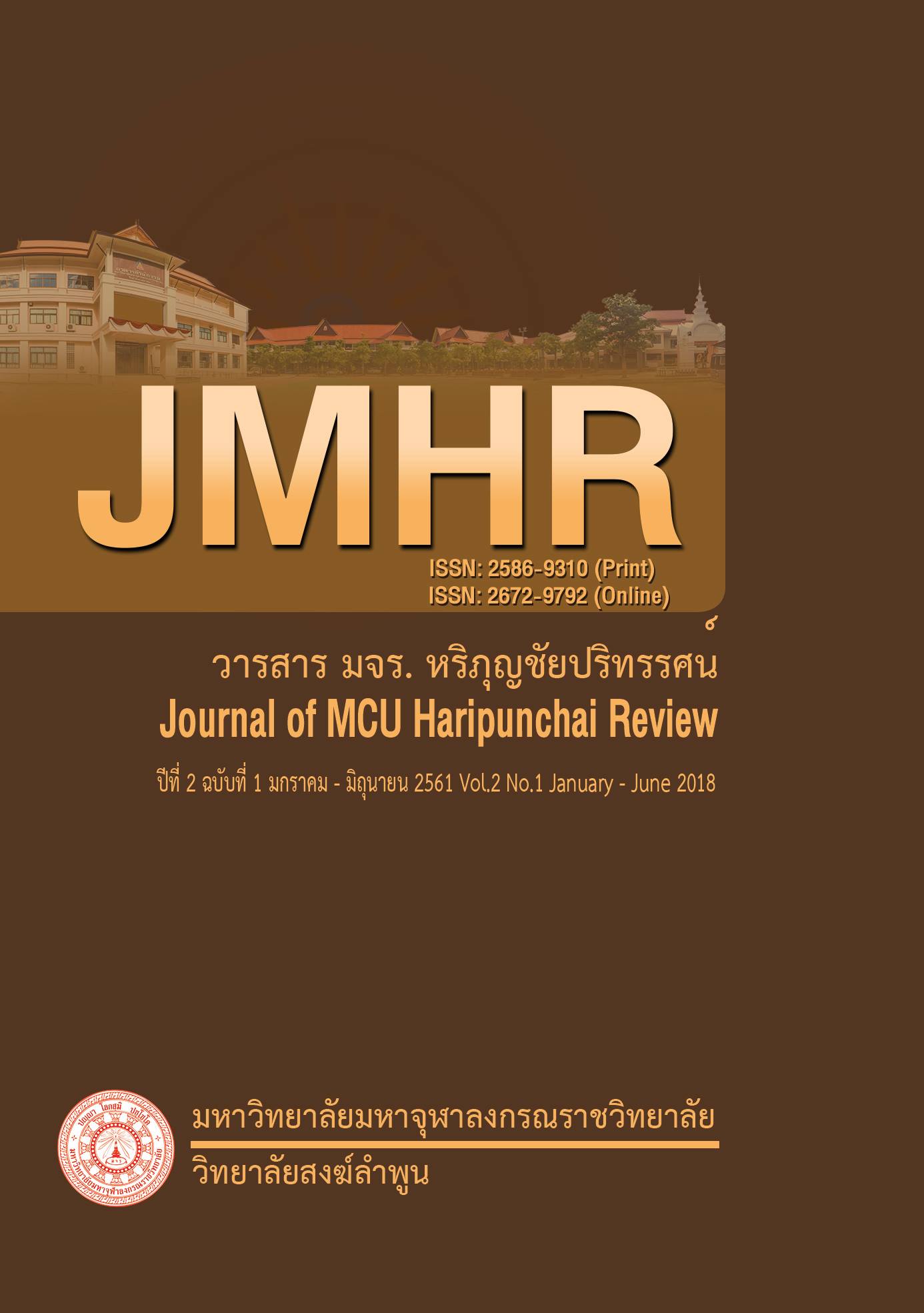Theravada Buddhist Philosophy with Reality Principles
Main Article Content
Abstract
This article aims to study the contents of the “Theravada Buddhist Philosophy with Reality Principles” It is found that the truth of Theravada Buddhist philosophy is derived from the experience gained through the proof of knowledge in the perception of emotion from the state of mind. The problem of life that leads to truth is a tool of pure perception and the end of doubt, and the delusion of the faculty (Tilakkhana). That's the way to get rid of ignorance. This is knowledge of the truth. It is a process that causes knowledge. There are three types of knowledge: Sutamayapanya cintamayapanya and Bhavanamayapanya that, require external senses and internal senses. Without 3 conflicts: There are 2 types of truth: conventional truth and the also lute truth that are under the rule of Tilakkhana. These truth are from training (Three fold training). The development of mental (tranquility) and development of wisdom (vipassana) that appears in the senses or senses in the recognition and prompting. It is a completely natural way.
Article Details
References
พระนิติเกษตรสุนทร. (2526). พระอภิธรรมสังเขป และธรรมที่น่าสนใจบางประการ. พิมพ์ครั้งที่ 7. กรุงเทพมหานคร : อภิธรรมมูลนิธิ.
พระมหาสมจินต์ สมฺมาปญฺโญ (วันจันทร์). (2544). พุทธปรัชญาสาระและพัฒนาการ. กรุงเทพมหานคร: โรงพิมพ์มหาจุฬาลงกรณราชวิทยาลัย.
พระมหาหรรษา ธมฺมหาโส (นิธิบุณยากร). (2550). พุทธจักรวาลวิทยา. กรุงเทพมหานคร : โรงพิมพ์มหาจุฬาลงกรณราชวิทยาลัย.
มหาจุฬาลงกรณราชวิทยาลัย. (2535). พระไตรปิฎกภาษาบาลี. ฉบับมหาจุฬาเตปิฏกํ. 2500. กรุงเทพมหานคร : โรงพิมพ์มหาจุฬาลงกรณราชวิทยาลัย.
________. (2539). พระไตรปิฎกภาษาไทย. ฉบับมหาจุฬาลงกรณราชวิทยาลัย. กรุงเทพมหานคร : โรงพิมพ์มหาจุฬาลงกรณราชวิทยาลัย
ราชบัณฑิตยสถาน. (2543). พจนานุกรมศัพท์ปรัชญา อังกฤษ-ไทย ฉบับราชบัณฑิตยสถาน. พิมพ์ครั้งที่ 3.กรุงเทพมหานคร : ราชบัณฑิตยสถาน,
วิทย์ วิศทเวทย์. (2542). ปรัชญาทั่วไป. พิมพ์ครั้งที่ 15. กรุงเทพมหานคร: อักษรเจริญทัศน์.
________. (2553). ปรัชญาทรรศน์ : พุทธปรัชญา. กรุงเทพมหานคร: โครงการเผยแพร่ผลงานวิชาการ คณะอักษรศาสตร์ จุฬาลงกรณ์มหาวิทยาลัย.
สนิท ศรีสำแดง. (2544). ปรัชญาเถรวาท. กรุงเทพมหานคร : มหาจุฬาลงกรณราชวิทยาลัย.
David J. Kalupahana. (1977). Buddhist Philosophy : A Histerical Analysis. 2 nd Printing. Honolulu : the University Press of Hawii.
________. (1999). The Buddha's Philosophy of Language. Sri Lanka : A Sarvodaya Vishva Lekha Publication.
Ediriwira Sarachchndra. (1994). Buddhist Psychology of Perception. Dehiwala: Buddhist Cultural Centre.
John leslie. (2009). “Cosmos”. A Companion to Metaphysics. Second Edition. Eds. by Jaegwon Kim, Ernest Sosa. Gary S. Rosenkrantz. Singapore : Utopia Press Pte Ltd.
Hugh J. McCann. (2006). “Creation and Conservation”. Encyclopedia of Philosophy. Vol. 2. ed. by Donald M. Borchert. Second Edition. 10 Vols. Farmington Hills: Thomson Gale,
Richard Gombrich. (2009). What the Buddha Thought. London: Chelsea Manor Studios.


